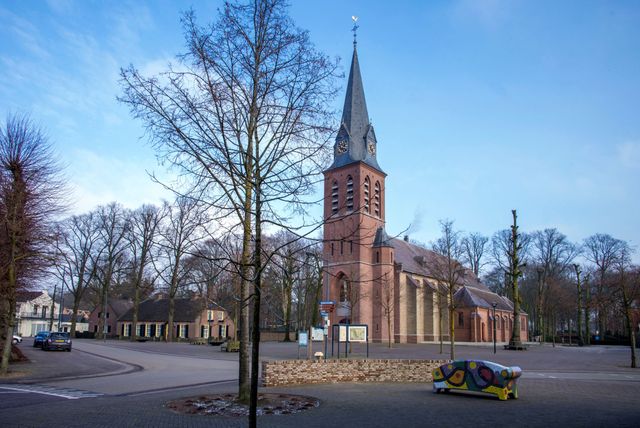Kerk Onze Lieve Vrouw van Handel | Handel
Contact
Onze Lieve Vrouwestraat 61
5423 SJ Handel Plan your route to Kerk Onze Lieve Vrouw van Handel | Handel
Handel's chapel was founded as early as the Middle Ages, around 1220 when a miracle occurred in the heath near the Hanel farm. A wooden statue…
Handel's chapel was founded as early as the Middle Ages, around 1220 when a miracle occurred in the heath near the Hanel farm. A wooden statue of the Virgin Mary was found in a hawthorn. No one knew where it came from; it was about twenty years old at the time. Soon the statue was venerated and a chapel was erected. When people lacked water during construction, the moor where the chapel was built was sandy and dry, Mary made a well. Many who drank from this water found it beneficial. This well can still be found today in the Processional Park Handel behind the chapel. The Teutonic Order, a powerful Order of Knights who owned the free fiefdom of Gemert (and later built the Gemert Castle) and also the fiefdom of Hanel, was also very devoted to Mary and enlarged and embellished the chapel and also the subsequent chapel built in the fifteenth century. The statue of Mary is still on display today, gilded.
The present church (in 1946 Handel became a parish and thus the chapel became a church) is a simple building, just as the first chapel was. There is little to say about the earliest time of worship here because the writings and documents of it were lost in a fire in 1709. Three recognized miracles have occurred around the church, all three miraculous healings in the 17th century. Throughout the centuries, then, there have always been accounts of many thousands of pilgrims visiting the chapel and its park, often also visiting Handel on their way to the larger Kevelaer pilgrimage site. These also came from the Protestant Republic. For there was a great density of schools and monasteries in the contiguous free parts of occupied Brabant where all Catholics from surrounding areas brought their children. Even the chapel of Handel could not entirely escape the iconoclasm, despite the protection of the Teutonic Order (which meant that because Gemert and also Handel were not Dutch territory, but belonged to the vast lands of the Teutonic Order they should not be subject to Dutch laws either. The Teutonic Order in its heyday owned three lands and could thus enforce concessions). Until 1811 (the dissolution of the Teutonic Order by Napoleon), the position of rector of the chapel was almost always occupied by a member of the Teutonic Order.
As has happened more often, parts of the chapel have been replaced over time, in 1743 the nave (the middle part of the church with the pews) was replaced, in 1853 a slate roof was added, in 1902 side aisles and an extension to the tower were added. The chapel has been enlarged and embellished over time, such as in 1898 with new paintings. It has always been considered an important place of pilgrimage.

